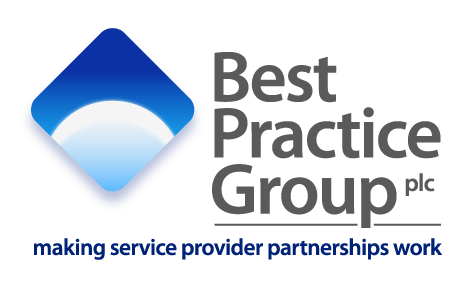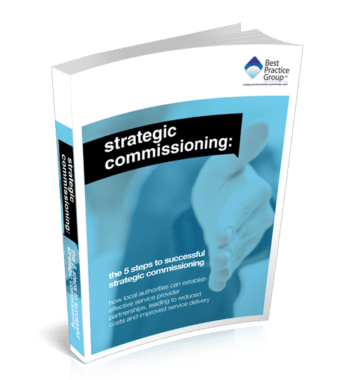 The complexities of client/supplier relationships – between signing the contract and commencement of the implementation – can, in many cases, be distilled down to a key set of principles and ‘checklist’ of actions… these leads many to ask, “what is a great example of a contract mobilisation plan?”
The complexities of client/supplier relationships – between signing the contract and commencement of the implementation – can, in many cases, be distilled down to a key set of principles and ‘checklist’ of actions… these leads many to ask, “what is a great example of a contract mobilisation plan?”
While each relationship is unique and subject to a whole ecosystem of challenges, there are often similarities in the processes that need to be completed. The actions taken from these processes allow us to create a checklist of stages your supplier ‘should’ go through once you have awarded them your contract.
It is important not to tell your supplier to perform these actions. They should be doing them using their own initiative. From your perspective, knowing whether your supplier is following these key principles, processes and stages is your progress assessment tool, your helicopter-eye view of the approach they are taking and your insight into whether your chosen supplier is following a robust process to delivering your project/services.
This list is not intended for use to ‘catch your supplier out’. It is to give you an early view of how likely your supplier relationship is to offer ‘plain sailing’ solutions (i.e. the supplier starting off as it means to go on, by using its initiative) as it can help to identify levels of supplier competency and conscientiousness.
In our experience of dealing with nearly 600 complex projects, the evidence from the lessons learned tell us that if your supplier is largely following the points below at the beginning of the project, it is more likely that you will achieve greater value together and a better outcome because they are following an assured process. If they deviate from these points at the outset, it does not necessarily mean you won’t achieve the outcomes you expect, but it is just more likely that the path to achieving them may be more challenging.
What is a contract mobilisation plan?
A supplier contract mobilisation plan refers to the activities that should be carried out by your supplier/strategic partner in the time period that starts after you have awarded them your contract, but before they commence the implementation work on your project, whether on-site or off-site.
The checklist is intended for more complex supplier solutions and services. The details below are the preparatory stage during which the majority of activities are managed by the supplier.
-
- From a supplier’s perspective, this checklist represents the step-by-step process they may already have in place to guide them through the initial stages of your new relationship.
- From the client’s perspective, this represents what you would hope to see and experience from your supplier through this time. In other words, it’s an ‘assurance’ checklist.
The most successful project partnerships we see are those where both supplier and client not only adopt these fundamental principles, but are fanatical that they should be in place to avoid any misunderstandings at the outset of the project – using Benjamin Franklin’s quote “By failing to prepare you are preparing to fail” as their mantra.
You may refer to the organisation you contract with as your Strategic Partner, Supplier, Vendor or Contractor, but we have simplified this to ‘Supplier’ in the outline below.
The key areas a supplier should address during contract mobilisation
During mobilisation, the common areas a supplier should address for general services – such as technology projects, business process outsourcing, business transformation projects and so forth – are as follows (further additions for infrastructure and construction projects are towards the end of this article):
1. Stakeholder meeting:
Your supplier should arrange a series of pre-implementation meetings with key stakeholders at your end to discuss the procedures that will be adopted during the project implementation stage. It is vital that all parties are aligned in their efforts and expectations, so the clearer the lines of communication can be from the outset, the greater your chances of working on a project that will succeed.
2. Project Handbook:
They should co-ordinate the preparation and issue of a project handbook setting out responsibilities between themselves and yourselves, procedures and lines of communication for the implementation stage. Continuing the clarity of communication theme, it is important to ensure that not only has everything been spoken about, but that it is also fully understood, agreed and captured in writing. In the dispute and project recovery work we deal with (and we deal with a lot) written records of this type we find helps to minimise many potential misunderstandings through the implementation process, thus paving the way for a much smoother, minimal risk and speedier implementation.
3. Impact schedule:
Has your supplier prepared an impact schedule and risk assessment to identify the potential cost of delay? For instance, have they assessed whether your (the client’s) key personnel might be ‘reassigned’ by senior management to other projects that are seen to have a higher priority and if so, how this might impact the supplier’s ability to deliver the project? Likewise, for the supplier’s own team; if the supplier wins a major new contract that means the supplier (usually the senior management team) wants to move some of the some of the supplier’s key resources to another project, what is the mitigation strategy that has been planned? Does the impact schedule (and the contract) simply ban the movement of key resources? Does the supplier get replacement resources up to speed on the project free of charge until they can demonstrate appropriate knowledge and competence to you of how they will take the project forward? What happens if key resources fall ill? How has this already been catered for to mitigate the impact on your project timescale, cost and implementation timescales?
4. Master programme plan:
Expect your supplier to publish a master programme plan which should include a schedule for timings, resources and costs for the implementation phase of your project. This may be split into a number of sections highlighting risks, milestones/performance targets and monitoring and control activities to take you through to a business as usual state.
5. Reconfirm the due diligence approach conducted by the supplier:
The supplier should look to reconfirm the basic principles with you for the due diligence approach they are going to embark upon in order to further clarify and validate your requirements (in case changes to the project or organisation have occurred that you have not made them aware of or you yourselves may be unaware of). As the expert, they must take responsibility (both from a practical perspective as it is good practice, but also from an implied legal perspective) to ‘ask the right questions’ of you to ensure that their due diligence process is as complete and accurate as possible.
6. Method statements:
A supplier should now prepare method statements to consider and plan for safer working practices. It should also obtain method statements from any subcontractors/associates they may be working with, so they can validate that all are aligned to the same outcome as you, the client.
7. Revalidate your project plan:
During the bid, your supplier should have submitted an appropriate project plan. This will need to be revalidated in case anything has moved on for you which could cause constraints with the implementation of the project/services.
8. Mobilise subcontracted services:
The entire supply chain should be clearly aligned with one another. Therefore, your suppliers should ensure that any SMEs or other specialised support advisors, sub-contractors and associates involved on the project are provided with a full brief of the project, including its business outcomes, so the entire supply chain is clear as to their respective roles and responsibilities and how these all align to everyone else’s. This will help to further avoid misunderstandings and ensure the project and/or ongoing service is delivered to drive maximum value for all concerned.
9. Security and compliance:
For those services that have a health and safety component or other statutory legal compliance – such as those required in financial services or buildings maintenance – make sure your supplier has appropriate documentation for the standards that align with your statutory responsibilities and that these are issued and discussed so that opportunities for misunderstanding over the roles and duties involved are minimised.
10. Contract register:
Make sure that all elements of the signed contract are stored in a known and accessible location that is appropriately secure and that they are all captured in a contract register. There are many reasons why rapid access to your contract may be required, but the two that come immediately to mind are that a supplier could misunderstand what is expected of them, or a supplier gets into financial difficulty and you need to know quickly what the escalation, step-in and/or exit and transition process should be.
11. Asset register:
Your supplier should be creating and maintaining/updating a central repository for all your software contract and licences, or if you are in a hard FM services contract, for example, they should be regularly updating the maintenance and compliance information into a central asset register. In terms of key equipment, this should contain the manufacturer, warranty information, purchase date, maintenance schedule, supplier contact details for spare parts and maintenance work, and so forth. It should also contain a cross-reference to the individual site register. You should ask to see the asset register updating processes, along with how the supplier can evidence that the asset register is being regularly updated. Also, make sure that you task one of your own team with the job of inspecting the supplier’s asset register monthly to ensure it is being kept up to date.
12. Site registers:
Again, where hard FM services have been contracted for, your supplier should be evidencing to you that it has appropriate site registers containing the relevant location and safety information for specific assets, accident reports and so forth, relevant to that site/asset, along with an appropriate cross reference to the Asset Register.
13. Statutory conditions handbook:
Where equipment maintenance is involved, such as some soft FM services (landscaping) and/or hard FM services and in particular, buildings and/or infrastructure maintenance, the supplier should provide you with all details that they are going to use or rely upon to deliver those services on your behalf. This might include any statutory conditions that must be satisfied prior to the services commencing (such as tree protection orders (TPOs), submission of contaminated soil disposal plans, approval of work adjacent to an operating rail track and so on).
14. Inspections and quality assurance:
Inherent in any mobilisation is the requirement for your supplier to provide you with information on what its inspection regimes and quality assurance procedures are for service delivery and for maintaining/keeping on top of the business outcomes both parties expect to achieve.
15. Building/construction works:
Where specific building and infrastructure construction projects are concerned, the supplier (contractor) should also provide insights and evidence of its documented processes for:
a. Surveys. Instigating any geotechnical survey work required.
b. Utility drawings. Obtaining statutory utility drawings of all existing and surrounding services.
c. Advising restrictions. Arranging road closures and restrictions, diversions of services and connections necessary for the works to be carried out.
d. Boundaries. Obtaining legal documentation describing precisely the site boundary and ownership.
e. Local authority notifications. Your supplier should notify the local authority (or approved inspector) of its intention to begin construction. It is important to note that construction cannot begin until at least two days after notification has been given, or, if an approved inspector is appointed, until the ‘initial notice’ to appoint an approved inspector has been accepted by the local authority (acceptance may be assumed if no valid rejection has been received five days after issuing the initial notice). Your supplier should also agree the procedures and programme for inspections by the local authority or approved inspector (such as drains, foundations and damp-proof courses).
f. Emergency services communication. Informing the emergency services of the intention to begin construction.
g. Base plate surveys. Commissioning a survey team to establish semi-permanent setting-out theodolite base plates.
h. Utilities communication. Arranging for the statutory utilities to provide the necessary water, power supplies, and ICT services required for construction activities.
i. Construction specific advisory. In addition for construction works, the principal supplier (contractor) should also provide you with evidence that it has the following in place:
-
-
-
- Site induction: Ensure that its workers are provided with suitable site induction, training and information to be able to work without undue risk to their health or safety.
- Phase plan: It has prepared an initial construction phase plan so everyone has clear visibility of what the plan contains.
- Waste management: An appropriate site waste management plan has been developed and circulated.
-
-
j. Client’s consultant team for construction work. During mobilisation your consultant team would usually undertake a range of activities:
-
-
-
- Key dates. Your contract administrator will usually bring key dates on the supplier’s master programme to the attention of your consultant team (for example dates for decisions or information, or for works outside of the contract). Your contract administrator should not approve the master programme as approval is likely to undermine your supplier’s ‘Expert Responsibilities’ for programming the works in such a way as to achieve the completion date.
- Site inspection briefings. Your contract administrator should brief site inspectors regarding procedures for inspecting and reporting on work on site as it progresses. This might include specific monitoring and reporting arrangements relating to the implementation of client-side policies, such as environmental policies (on a large project this might involve the appointment of an environmental consultant specifically to perform that role).
- Production information. Your supplier administrator should arrange for production information to be issued to the supplier.
- Legal and statutory compliance. Your lead consultant should ensure that checks have been done on all necessary insurance, permissions, approvals, party wall agreements and other statutory requirements, and that all necessary planning conditions have been satisfied.
-
-
k. Client management team for independent assurance. During mobilisation, A client should:
-
-
-
- Party wall surveyors. Appoint party wall surveyors where appropriate.
- Approved inspectors. Appoint an approved inspector to jointly issue an ‘initial notice’ to the local authority. Unless the local authority rejects the initial notice, responsibility for verifying that the project complies with the building regulations will then fall to the approved inspector.
- Site inspectors. Appoint site inspectors.
- Testing and commissioning. An appropriately qualified in-house or outsourced engineering team should be appointed to witness testing and commissioning and to take over the running of the services as soon as practical completion is certified.
- Operational procedures. Appropriate operational procedures should be put in place to move some client-side staff and equipment so that it can continue to operate effectively during construction.
-
-
Preparation and planning are key to mobilisation
This mobilisation checklist has been formed over years of experience on hundreds of major complex supplier relationships within which patterns could be ascertained, leading to the formation of guidance which in turn has afforded consistent results.
Preparation and planning are key, but unless your supplier is completely in alignment with you on this project, it will be very difficult to achieve the best outcomes.
If you are looking for a way to develop a plan of action with your suppliers to achieve more consistent results, contact us on 0845 345 0130 or email advice@bestpracticegroup.com

